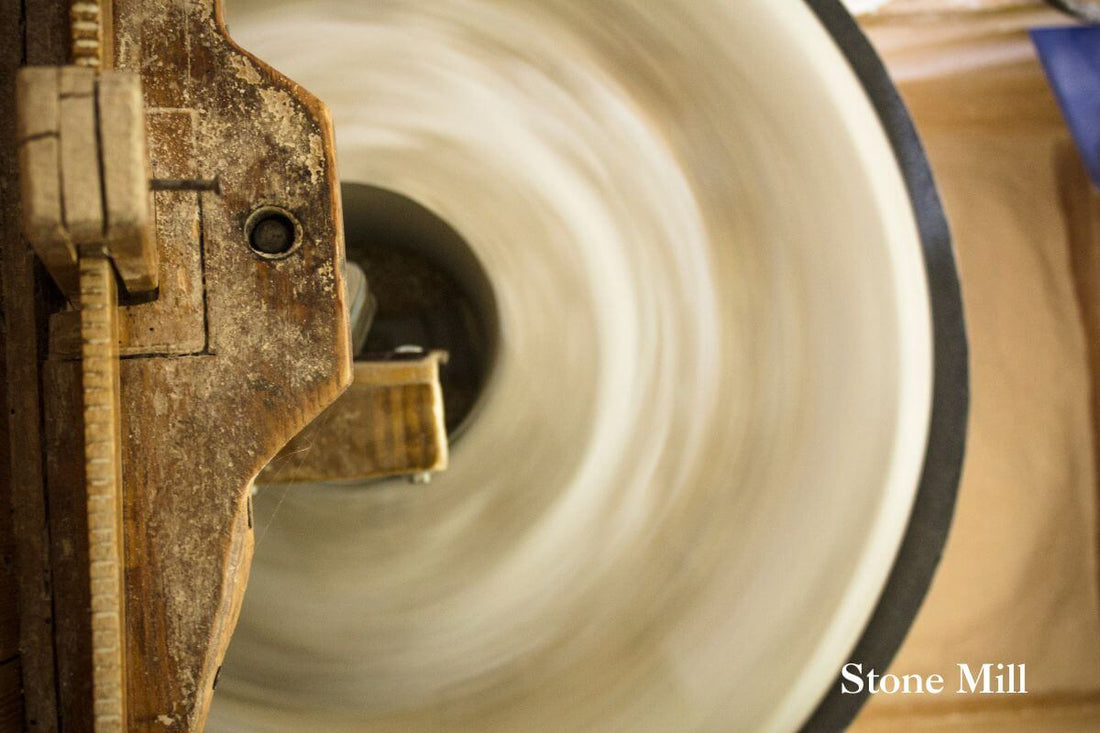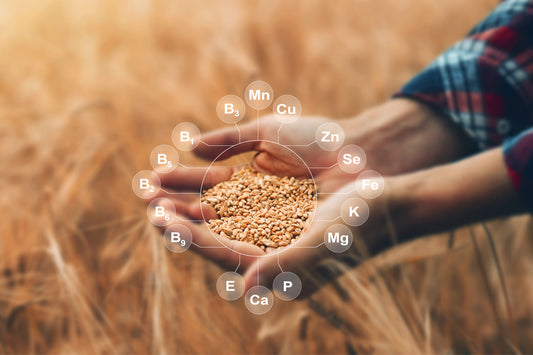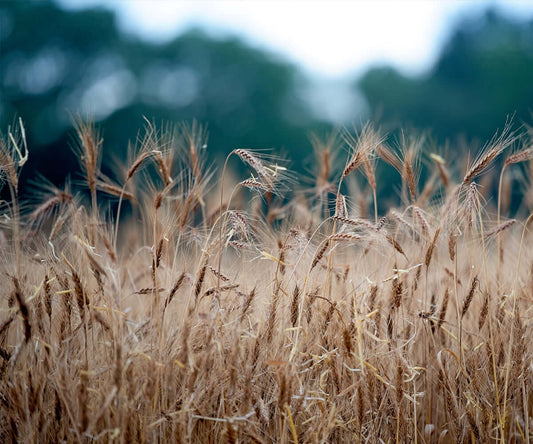
Stone Milling vs Roller Milling: Why Stone Milled Flour Reigns Supreme
Share
But first, what to know about wheat...
An individual wheat berry is made up of three parts: the bran, germ, and endosperm. Each of these sections contain health-promoting nutrients.
Stone-Milling
Stone-milling involves grinding wheat between two large stones. One stone remains stationary, while the other rotates. This traditional method preserves the bran, germ, and endosperm, resulting in a flour that retains all the nutrients and natural oils.

Benefits:
- Preserved Nutrients: The slower grinding process helps preserve the essential nutrients and enzymes.
- Enhanced Flavor: Stone-milled flour tends to have a richer, nuttier flavor.
- Sifted Flour: Stone-milled flour that has had a portion of the bran and germ sifted out to create a more traditional flour texture without losing all the bran and germ health benefits.
- Whole Grain: It maintains the integrity of the whole grain, making it healthier.
Drawbacks:
- Can produce more heat, which might affect the nutritional content if not managed properly.
Roller Milling
Roller milling involves passing wheat through a series of steel rollers that crush and separate the grain into its component parts (bran, germ, and endosperm). The endosperm is then ground into flour.

Benefits:
- Efficiency: Produces a fine, consistent flour quickly and efficiently.
- Scalability: Suitable for large-scale industrial production.
Drawbacks:
- Nutrient Loss: Removes all of the bran and germ, leading to loss of fiber, vitamins, and minerals.
- Additives: Often requires fortification with synthetic nutrients to replace those lost during processing.
Why Farm2Flour Chooses Stone-Milling
At Farm2Flour, we believe in preserving the natural goodness of our organic wheat. Here’s why stone-milling is our preferred method:
-
Nutrient Preservation: Stone-milling operates at a slower speed and lower temperature compared to other milling styles. This helps retain the essential nutrients and enzymes present in the wheat. Vitamins, minerals, and fiber are preserved, ensuring that our flour remains a wholesome ingredient for your baking needs.
-
Enhanced Flavor: The traditional stone-milling process releases the natural oils and flavors within the wheat, resulting in flour with a richer, more complex taste. This means your baked goods will have a depth of flavor that is often lacking in commercially milled flours.
-
Whole Grain Integrity: Stone-milling keeps the wheat's bran, germ, and endosperm together, providing a true whole grain experience. This ensures that you get all the health benefits of the entire grain, including fiber, protein, and essential fatty acids. Even when the flour is sifted to optain optimum texture, the flour will contain a higher portion of the germ and bran than other milling practices.
-
Sustainability: Our stone-milling process is environmentally friendly. It is less reliant on industrial processes and more aligned with our commitment to sustainable farming practices. By milling on-site at our 4th generation family farm, we reduce the carbon footprint associated with transporting grain to off-site mills.
- Tradition and Quality: Stone-milling is a time-honored technique that has been used for centuries. By adhering to this traditional method, we maintain a connection to the past while providing our customers with the highest quality, freshest flour possible.
Conclusion
Choosing the right milling method is crucial for producing high-quality flour. At Farm2Flour, we stone-mill our organic wheat to ensure that you get the most nutritious, flavorful, and wholesome flour available. Our commitment to stone-milling aligns with our values of purity, sustainability, and quality, ensuring that every bag of flour we produce meets the highest standards.
Experience the difference that stone-milled flour can make in your baking and cooking. Visit our Organic Flour Products Page to learn more and to start your journey with our fresh, organic flour today!



